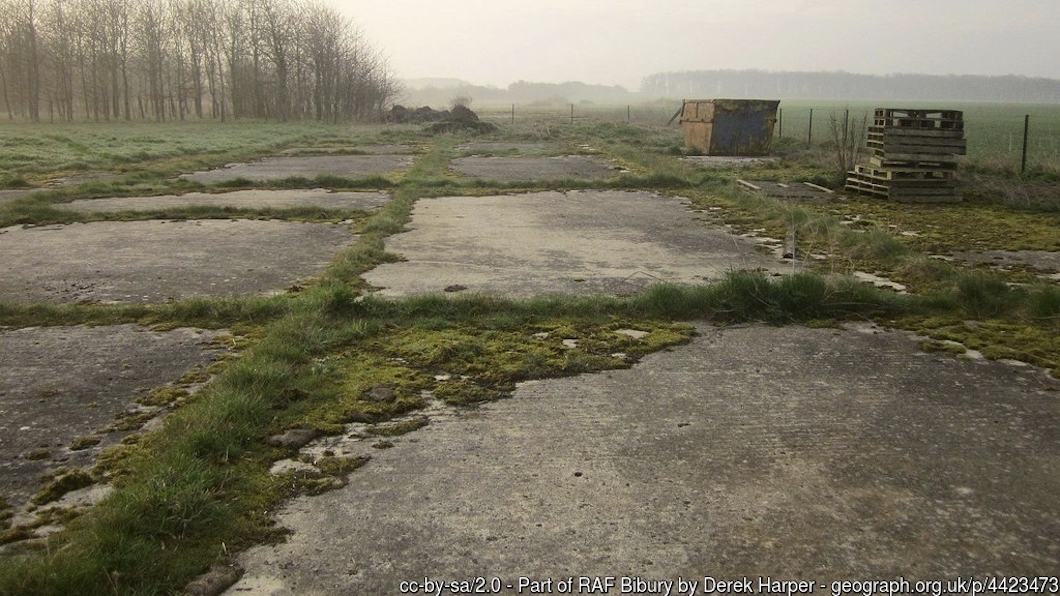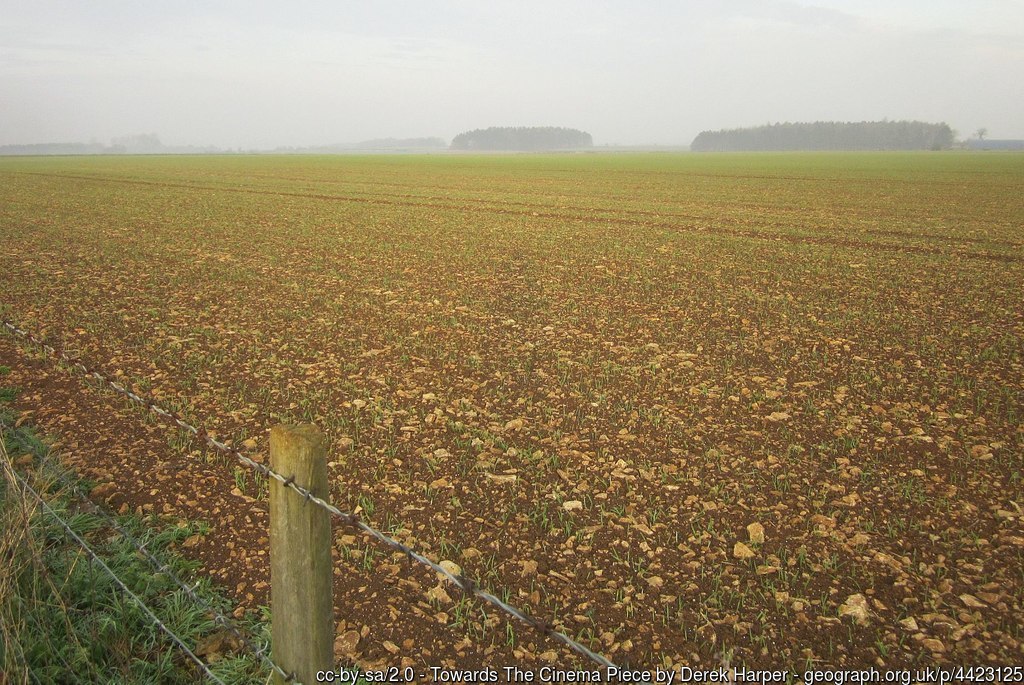
Hardstanding at Bibury airfield, 10 April 2015.
Memories of Bibury airfield in Gloucestershire from Rod A'Bear:
Bibury airfield was part of the farm (Manor Farm) which my father, Charles A'Bear, managed from around 1947 to the mid-1970’s. During the Second World War, he lived at Kilkenny, near Aldsworth, managing the farm there. One day a German aircraft passed over the farm, dropping bombs as it went towards the airfield.
I was born in 1943 and was fascinated looking round the still complete camp as a young boy. I remember being shown the concrete hardstanding where the aircraft were refuelled. Nearby was a Cotswold stone barn (no longer existing) which had bullet holes in the tin roof. The bomber had sprayed the area where the aircraft were parked, hitting the barn too. The control tower and navigation hut not longer exist, they were demolished to make way for more buildings when Mill Engineers moved to the site. Most of the dispersed collection of huts and buildings have been knocked down and trees planted, in an attempt to disguise and break up the remaining concrete bases. There were at least 4 or 5 blister type hangers, with two remaining today. The larger hangar was used after the war for storing tons of billets of aluminium, no doubt the result of melting down surplus aircraft. Sacks of maize were also stored there at one time, also a large quantity of radio valves - these were systematically being stolen, resulting in some arrests! One winter, Black and White coaches stored buses there, and on another occasion Rootes Group over-produced cars and stored the surplus there.
I remember a notice painted on a large wooden board stating that spitfires were to be left facing the doors. Some of the buildings on the other sites were used to store Spitfire belly drop tanks, which were later disposed of, but some of the village lads managed to get hold of some to use as rafts on the river. I later had one myself. It was silver in colour and in 1” letters said SPITFIRE ONLY, 100 OCTANE.
The old rifle range on the airfield still exists. As children we would sift through the sand where the targets were placed to find spent bullets. The runways were made by pegging down steel grids, which were locked together to form a stable runway, through which the grass could grow. I still have three of these grids, on which I store firewood! The pegs to anchor them to the ground were about 18” long, shaped like a shepherd’s crook and about 1/2” square with a sharp point. Not all were recovered when the grids were removed after the war, occasionally one would be ploughed up many years later.
In the hedge at the end of one of the runways there are the remains of what I was told by my father was a machine-gun nest, used for the defence of the airfield. To my mind it seems too small for this, and I wonder if it was perhaps part of a beacon used for the blind landing system in use at the time….
The old red-brick guard room still exists (in a dilapidated state) - and several other old buildings are still on the airfield, including the old transport shed, I have an old map of the farm, showing the airfield and the orientation of the runways. A lot of people were killed on or around the airfield and it would be very fitting to have a memorial in memory of those who lost their lives here.

Looking across Bibury airfield, 10 April 2015.
Thank you very much to Rod A'Bear for supplying this article. If you have an airfield story please contact us today.